Jazz is a music genre with district roots and an intriguing history, mixing a range of international styles to create a sound unlike what was ever experienced before. If you’re asking questions like, “Who created jazz?” “What are the origins of jazz in America?” and “When did jazz music start?” here’s what you need to know about the history of jazz.
The Origins of Jazz
When Was Jazz Invented?
“When was jazz music created?” is a question many jazz fans and people new to the genre ask. The beginnings of jazz actually date back to the 19th century. New Orleans was home to Congo Square, a space where slaves would gather and play music. That tradition started a bit before 1820, and it brought together people from a wide array of countries, each introducing a bit of their nation’s unique sound to the mix.
Over time, the blending of African music and Caribbean music was joined by marching band instruments. Marching bands were highly prevalent during the Civil War. They introduced many people to various brass instruments, and the united sound eventually formed the genre known as ragtime. The influence of New Orleans music, with its rich cultural exchange and ethnic diversity, played a crucial role in the development of jazz.
Spiritual music was also popular during the era and made its way into what ultimately became the jazz sound. After the Civil War, formerly enslaved people from throughout the American south brought blues to Louisiana. In time, all of these sounds melded together, leading to the genre that became jazz. New Orleans brass bands also significantly shaped early jazz with their lasting impact and contributions from horn players.
Ultimately, exactly when the genre known as jazz began is a bit debated. Most feel it started in the late 1800s or early 1900s. However, it ultimately rose to fame in the 1920s.
Where Did Jazz Originate and Why?
Jazz is often thought to have been founded on the musical traditions of West Africa (rhythm, “feel,” blues) and Europe (harmonic chords, variety of instruments). Early jazz also incorporated church hymns, slave songs, field chants, and Cuban-style rhythm.
Jazz originated in New Orleans, primarily as it served as a melting pot for the music that ultimately led to the jazz genre. One of the main reasons it formed there was that slaves from a wide variety of nations could come together and play music, something that wasn’t always permitted in other cities or states.
The Louisiana Territory had “Le Code Noir,” a set of rules outlining the treatment of slaves. While many of the requirements were harsh and strict, providing slaves with few rights or freedoms, a few clauses gave slaves some rights. Some of the tenants barred slave owners from making the slaves work on Sundays or Catholic holidays. As a result, slaves had a day of rest during the week, and many near New Orleans used that time to gather at Congo Square.
Essentially, that answers the question, “Why is New Orleans the birthplace of jazz?” it was the required Sundays off that created conditions that weren’t present in many other parts of the American south. Through the weekly gatherings, music was a way to find joy and served as the foundation for what eventually became jazz.
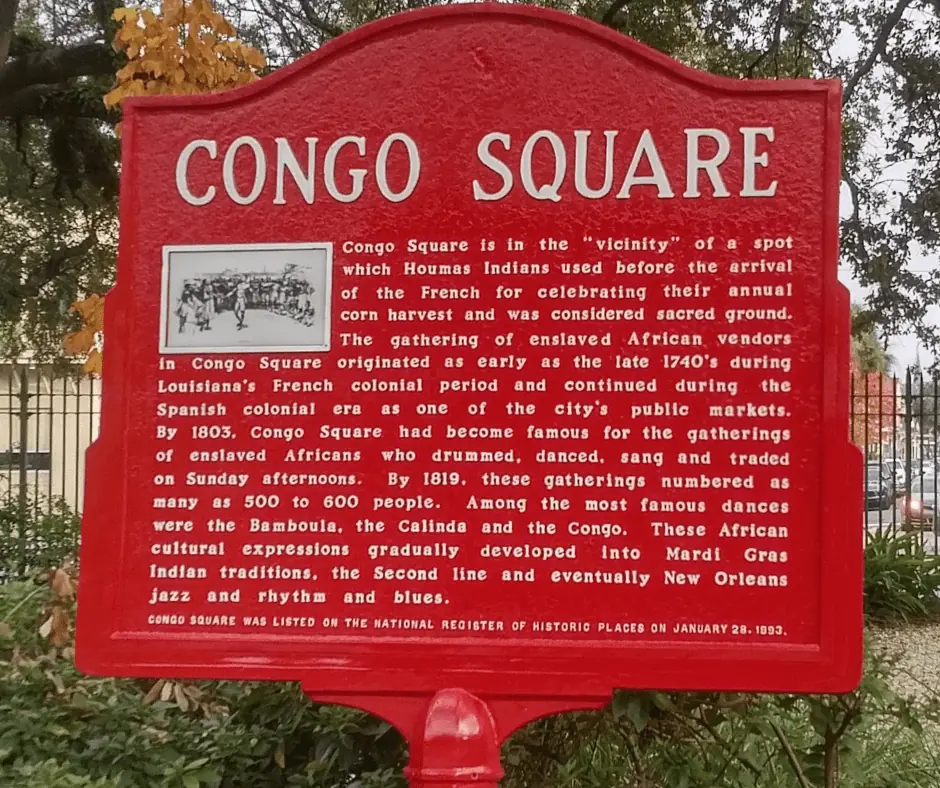
Who First Invented Jazz Music?
When it comes to who invented jazz music, most historians consider Buddy Bolden – a cornet player –the first jazz musician. He was an African-American bandleader, and he was even once dubbed the “first man of jazz,” cementing his place in jazz history.
At a minimum, Buddy Bolden was a musician that spearheaded the genre, often playing in Storyville at night. While there aren’t any known recordings of his playing, his sound was said to feature the improvisation traditionally associated with the genre.
However, Buddy Bolden wasn’t the only musician associated with the birth of jazz. Some other early jazz African-American musicians of the time included Mutt Carey, Bunk Johnson, and Joe Oliver. Creole jazz musicians like Jelly Roll Morton, Freddie Keppard, and Sidney Bechet also shaped the genre.
As one would expect, many of those musicians blended various musical traditions, featuring beats from West Africa and the Caribbean, European classical music instruments, and many other sounds and influences.
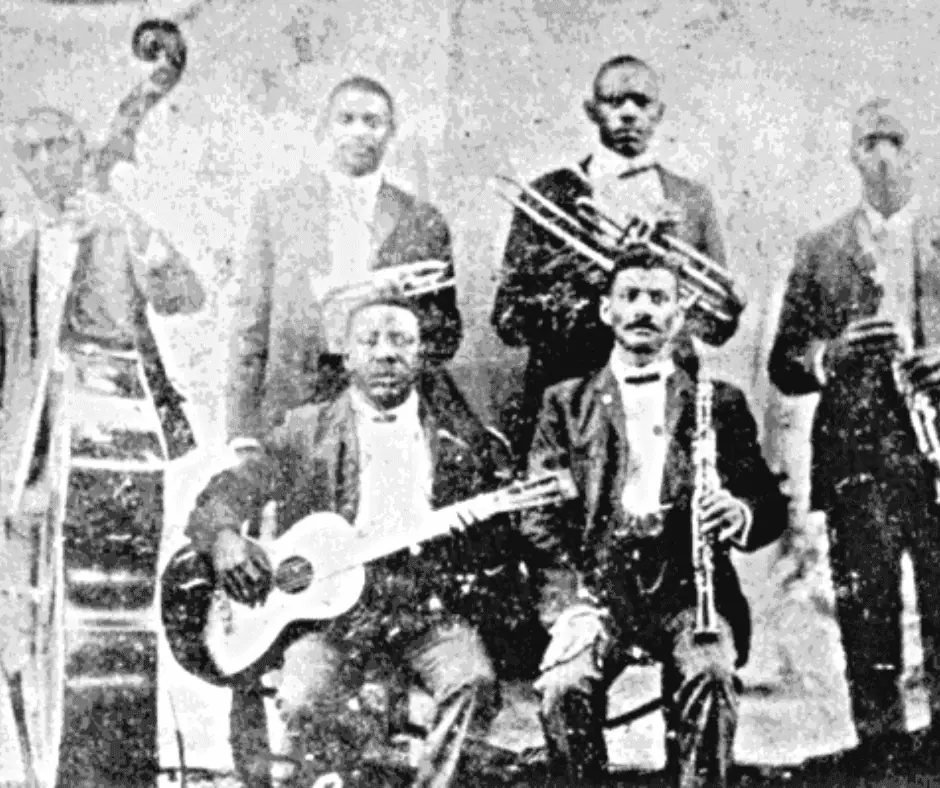
How Was Jazz Sound Created?
As mentioned above, jazz music is an amalgamation of several different genres, featuring sounds from a wide array of international music styles. However, its foundations are largely based on three specific types of music. Here’s a closer look at the jazz music origins and the genre’s key characteristics.
What Are the Three Musical Roots of Jazz?
The roots of jazz are primarily ragtime, marching bands, and blues. Ragtime developed naturally in the American south, featuring African-American rhythms and styling combined with more traditional European music. It became a part of minstrel shows, allowing it to spread through many regions within the American south.
Marching bands were a form of support during the Civil War. Primarily, they aimed to keep morale high, but they also accompanied some drills. These sounds became widespread during that era and were viewed as uplifting, even if they were mainly associated with a challenging period in history.
The blues also developed as a genre during the Civil War. Word songs, minstrel shows, and spiritual music influenced that genre. Folk music and other popular sounds of the era also made their way into the blues genre, further diversifying the sound stable blues itself.
Generally, jazz is viewed as a blending of those styles, incorporating their musical elements and many of the sounds and emotions present in them. But jazz also brought something new to the table, particularly when it came to improvisation.
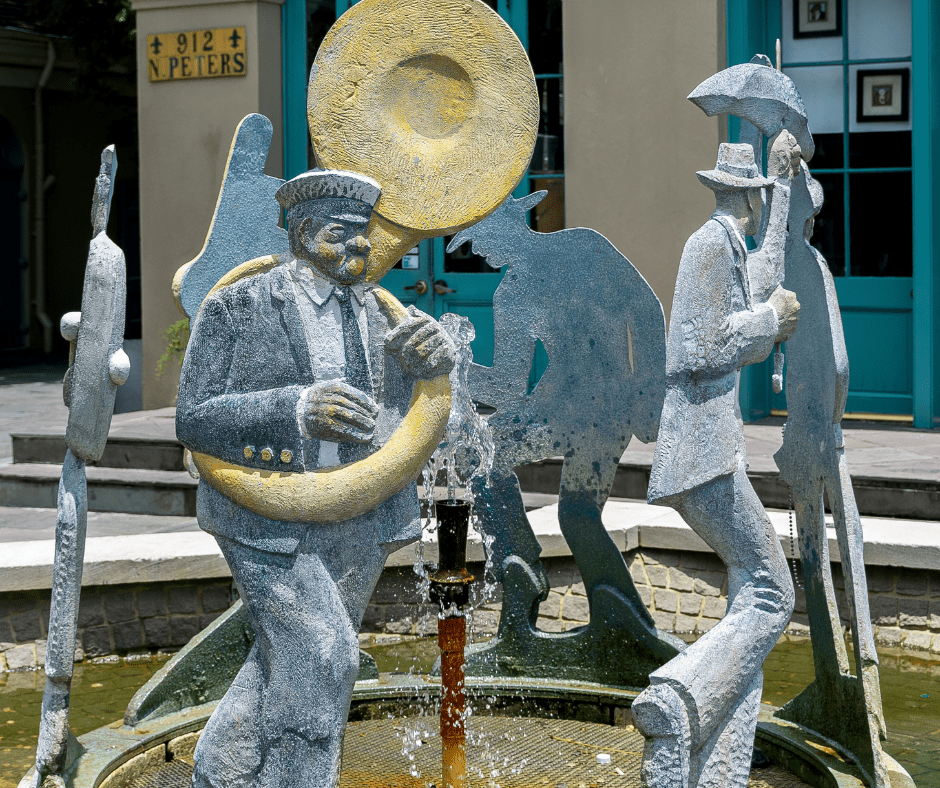
What Are the Music Characteristics of Jazz?
Jazz has many characteristics, some that it shares with other genres and others that are generally unique to the genre, at least during the origins of jazz. Improvisation is one of the most classically defining traits. However, syncopation, polyrhythms, and irregular rhythms are potential hallmarks, too.
Solos are also a traditional part of the jazz genre. Most early jazz also featured calls and responses, where one musician in a band would offer a phrase, and another would essentially reply to it.
Generally, jazz is a genre that seems to embody musical freedom. While some subgenres do have a distinct sense of melody, harmony, and rhythm, many others include unexpected elements as a form of expression. Often, it’s those unanticipated moments that make the genre highly unique, setting it apart from many other types of music.
How Did Jazz Evolve?
While the origins of jazz date back to the pre-Civil War era, like most types of music, it also changed over time. New sounds were incorporated as musicians began embracing jazz concepts. Additionally, various jazz musicians began honing their unique sounds, some of which led to the creation of new subgenres.
As mentioned above, jazz as a separate, official genre may date back to the late 1800s or early 1900s. However, jazz didn’t come into its own until the 1920s.
Many consider the 1920s the start of the jazz age since that’s when it first became broadly popular in the US and Europe. The “Roaring Twenties,” with prohibition, speakeasies, flappers, and music, drove jazz into the mainstream and made overnight success stories of musicians such as Louis Armstrong, Duke Ellington, and Count Basie.
The age of jazz culminated in the historic 1938 Benny Goodman concert at Carnegie Hall, bringing together musicians from various ethnicities to perform jazz inside this hallowed hall. At this point, the jazz of the 1920s and 30s was already starting to give way to the Big Band era, although jazz musicians such as Ellington and Armstrong would continue to develop jazz until their deaths.
Despite the dominance of jazz ending with the Great Depression, the music has continued to evolve with new styles and sub-genres forming as its influence on pop culture continues to echo through time, along with many new up-and-coming jazz musicians. Did you know April 30th is International Jazz Day? It was created in 2011 by UNESCO to help highlight how jazz is able to bring unity across the world.
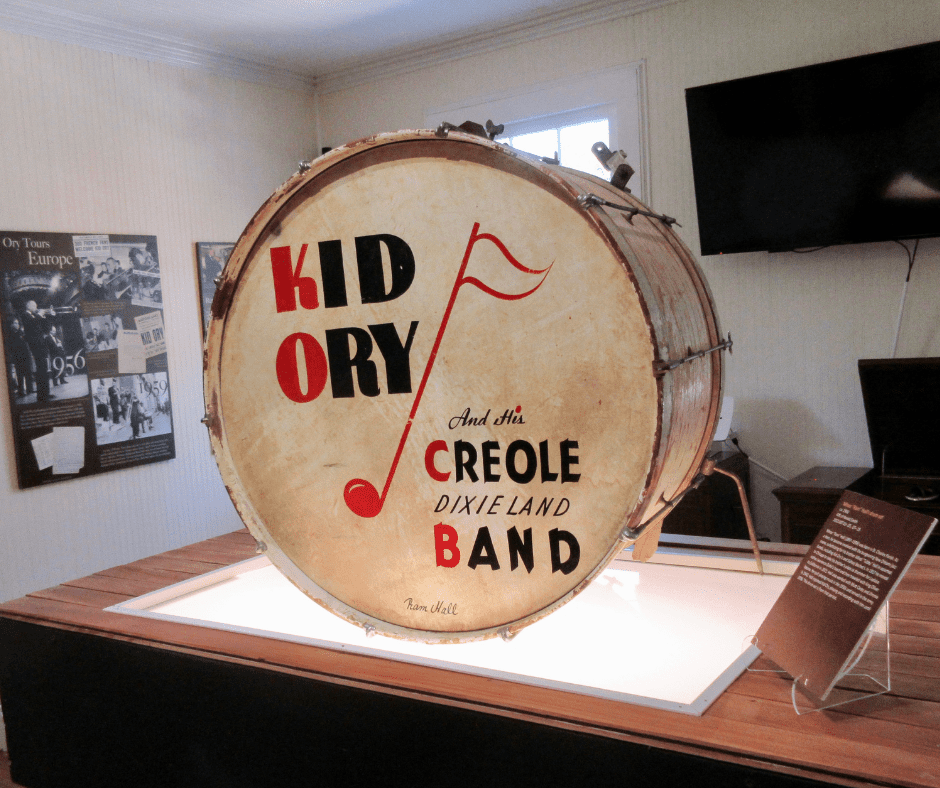
Infrogmation of New Orleans, CC BY-SA 4.0 via Wikimedia Commons
What Are the Origins of the Different Types of Jazz?
Over time, jazz evolved to include a wide array of subgenres, each with its own unique sounds and characteristics. While they all have jazz foundations, their differences cause them to stand apart from one another. Some feature cultural influences from nations that weren’t necessarily part of the foundation of jazz. Others embrace or shirk key traits like improvisation to varying degrees.
Here’s a quick overview of the origins of the different types of jazz.
Modern Jazz
Modern jazz essentially began in the 1940s, and it aimed for more freedom for improvisation. It stepped away from chord progressions, giving solo musicians more space to create unique melodies, using nearly any scale or note they wanted. As a result, it more often features unexpected elements and can be offbeat or challenging to follow.
Free Jazz
Free jazz is an incredibly avant-garde subgenre, providing the highest degree of freedom one typically finds in jazz. It largely originated in the late 1950s, when Ornette Coleman began moving away from traditional notions and limitations associated with jazz, functionally rejecting all conventions. As a result, this type of jazz is one of the most challenging to define, as the lack of constraints is what is typically the basis for the genre.
Bebop Style
Bebop primarily began in the early 1940s and is incredibly fast-paced and experimental. Many of its roots come from the integration of swing music, and scat singers were commonly part of the songs. Those scat musicians led to the genre’s name; a “bebop” was functionally a nod to the nonsensical syllables that come with scat.
Latin Jazz
Latin jazz is a fusion style that brought Latin sounds into the jazz genre. Usually, it features Cuban and Spanish Caribbean rhythms coupled with traditional jazz instruments and music compositions. Its origins also date back to the 1940s, formed initially by Afro-Cuban musicians in Spanish Harlem that collaborated with African-American jazz musicians.
Cool Jazz
Cool jazz arose during the 1940s as a counterpoint to faster and more chaotic or upbeat forms of jazz like bebop and hard bop. This genre brought in more classical elements, essentially moving away from blues and swing elements present in many other subgenres. Comparatively, it’s more restrained, though that can also make it more accessible to those who find certain types of jazz overwhelming.
Jazz Manouche
Jazz Manouche originated in Paris in the 1930s. Usually, it features smaller bands and favors an acoustic sound. Drums aren’t usually a part of the genre, leaning instead on rhythm guitarists to maintain the beat. Its origins are attributed to Jean “Django” Reinhardt, a Romani guitarist, and Stephane Grappelli, a French violinist. Due to Reinhardt’s background, the genre was once referred to as “gypsy jazz,” though that has since fallen out of favor due to the negative connotations of the term “gypsy.”‘
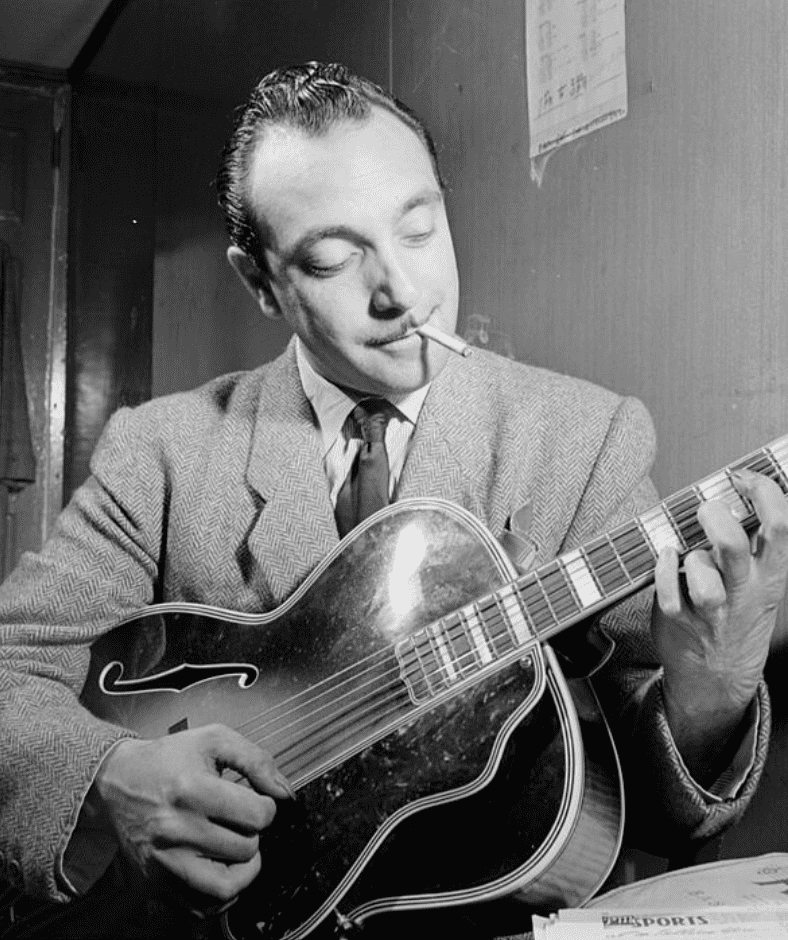
Photograph by William P. Gottlieb, CC BY-SA 4.0 via Wikimedia Commons
Jazz Fusion
Jazz fusion began developing in the 1960s. During that era, jazz musicians started integrating sounds more widely associated with rock music and R&B. Most who began developing this genre had collaborated with Miles Davis at one point. While Davis mainly rose to fame in the bebop genre, he was highly experimental in his later career, playing a critical role in a variety of subgenres, including jazz fusion.
Smooth Jazz
Smooth jazz began in the 1970s, emerging as a form of crossover jazz designed to have broad commercial appeal. Comparatively speaking, it’s an easy-listening version of jazz, incorporating more predictability and gentleness than you find in many other types of jazz. Essentially, the goal was to reach a wider audience, so the genre added pop-inspired elements and features commonly associated with R&B ballads.
Modal Jazz
Modal jazz emerged in the mid-1950s. It’s named for the fact that it relies on musical modes. Organizationally, it’s more scalar than chordal. As a result, it provides more space for unique improvisations that would otherwise be challenging with more chordal versions of jazz. Both Miles Davis and John Coltrane are credited with popularizing modal jazz, allowing them to step away from the more rigid structures associated with some other approaches to jazz composition.
Swing
Swing started in the late 1920s, becoming broadly popular by the mid-1930s and remaining so until the mid-1940s. Most consider the years between 1930 and 1945 as the Swing Era, a time when big bands led by legends like Duke Ellington and Count Basie were making waves. The genre has a distinct rhythm, accentuating specific beats to create its unique feel.
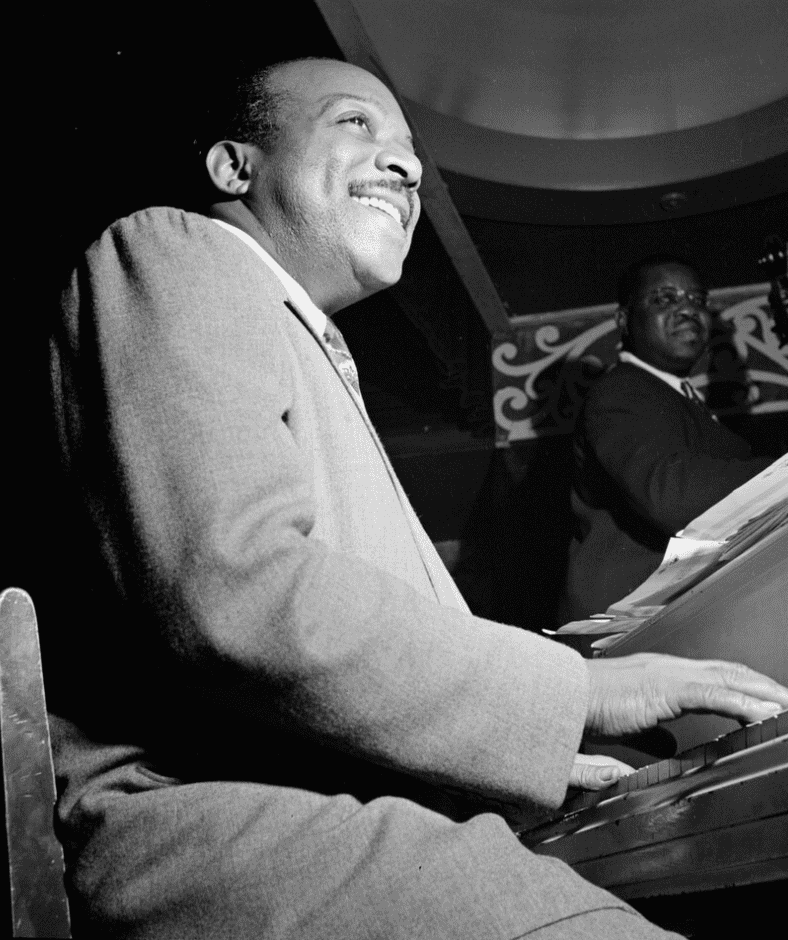
Photograph by William P. Gottlieb, CC BY-SA 4.0 via Wikimedia Commons
Hard Bop
Hard bop emerged in the mid-1950s, incorporating more features that you usually find in gospel music, R&B, and blues. It favored medium tempos over quicker ones, as it worked to bring soul sounds back into the genre, something some felt was lacking in cool jazz and some other emerging subgenres. It also maintained enough space for free expression but balanced that with a sense of groove, making it more danceable than subgenres like bebop.
Jazz legend Louis Armstrong once said: “If you have to ask what jazz is, you’ll never know.”


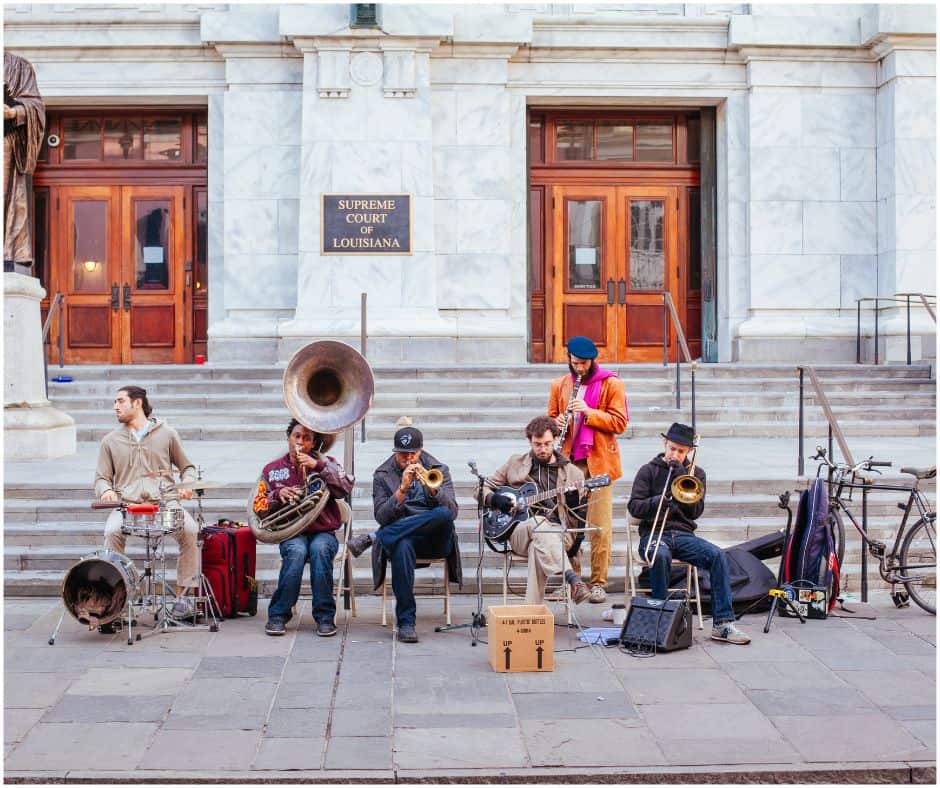

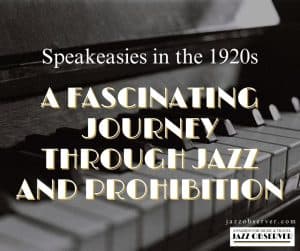
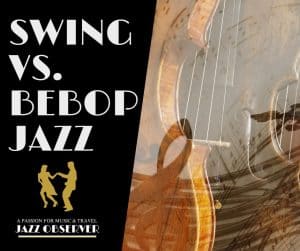
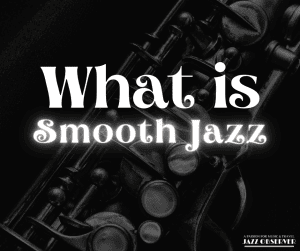
Comments
Great information.
Real Music, Great Musicians and a Tribute to Real Art!
Thank you for informing The Great Melting Pot that Jazz was a creation from the people America enslaved for over 200 years – West Africans. Yes, indeed the art of jazz like most of “American” or “Southern” music and style actually has its origins in West Africa. Not Europe or even Japan .Yes, Japan has followed in the footsteps of the White Western World and have also tried to remove Africans from their artistic and creative contributions that have changed humanity in some very significant and lovely ways. Not to mention of course these Enslaved Africans and descendants of Enslaved Africans made so many Western Corporations trillions of dollars over centuries of time. And this is what USA calls Meritocracy.
jaz est coolieo
Jazz est tres coolieo
A fantastic read, as a avid watcher of Stingray djazz and loving the talent of especially yesteryear, this write-up has given me more of an insight as to how, where and when Jazz came into being.. thank you.
This a lucid commentary that cuts to the chase regarding jazz’s social and musical origins. The devil is in the details and the details are what I like about this piece, and its incisive presentation. Black slaves were the instrument, no pun intended, by which the music emerged, evolved, and took wing. The originators came from plantations to the city to the world. It’s truly a folk music to use a term. It came from everyday people, thus its feeling of universality, joy and sadness, and like all good things it morphed into the public’s heart, influencing every genre of popular music as well as a good part of classical music of which it gained structure and got written down. In the end, like all the great arts, the end product is feeling, a sense of connection with the heart and soul of its listeners. It’s one of the few things in life I cherish and that has set me free in the best sense of the word to relive the primordial spirit inside my mind and body. We should have a monument the likes of the Eiffel Tower on the river shore of New Orleans, lit every day with the colors of wonder and the knowledge of its historic roots. Below it should be the most elaborate museum and library of jazz literature and recordings in the world.
Excellent summary. There is a new Louisiana Creole album entitled Mô kouzin, mô kouzinn. Produced by Acadian songwriter and producer Benoit LeBlanc, it explores some of the Creole roots of Jazz. The album’s website mokouzin.com features a multi-media blog named Creole Chronicles which details some of the history through the words of the musicians themselves. Cheers